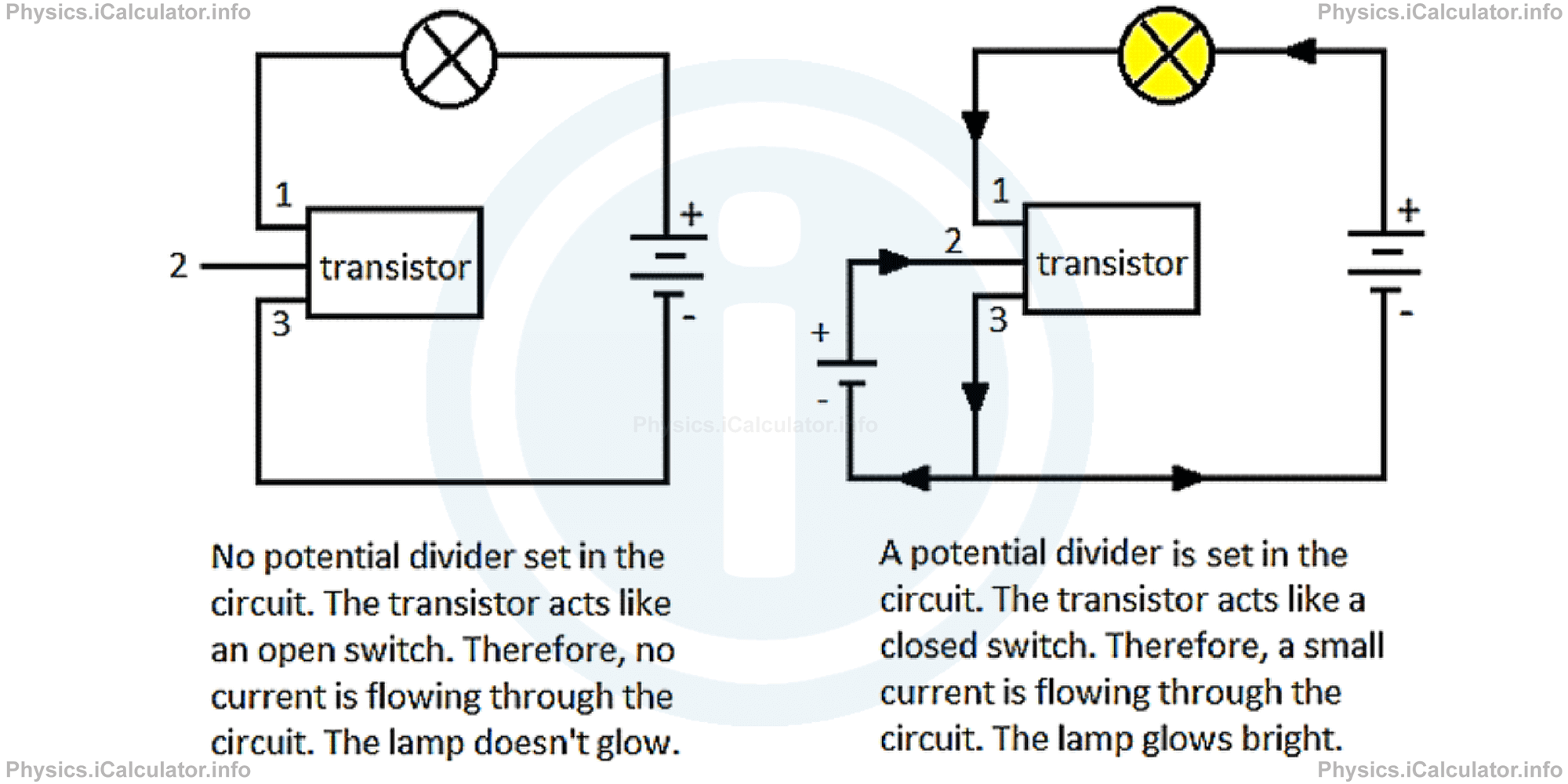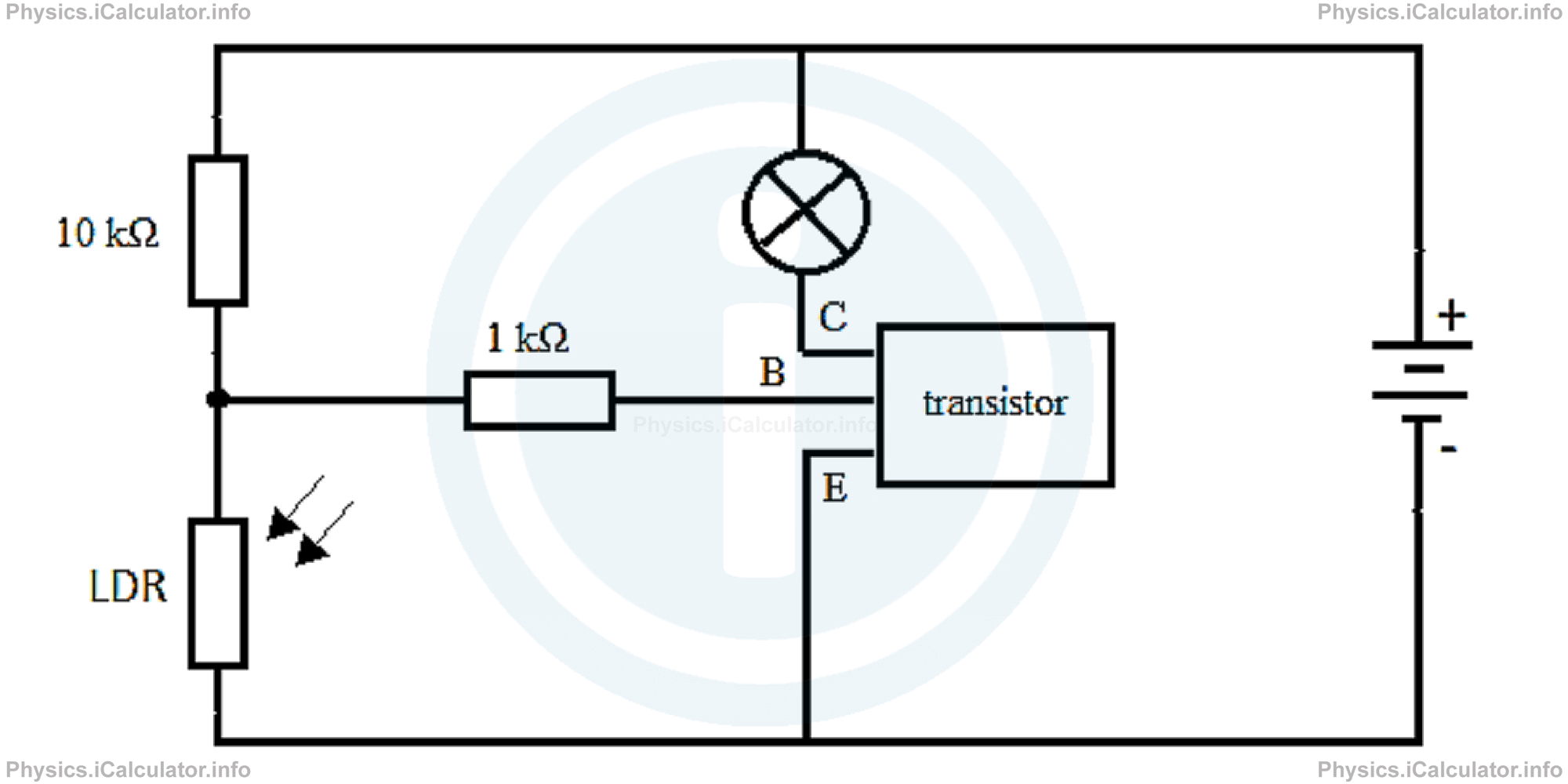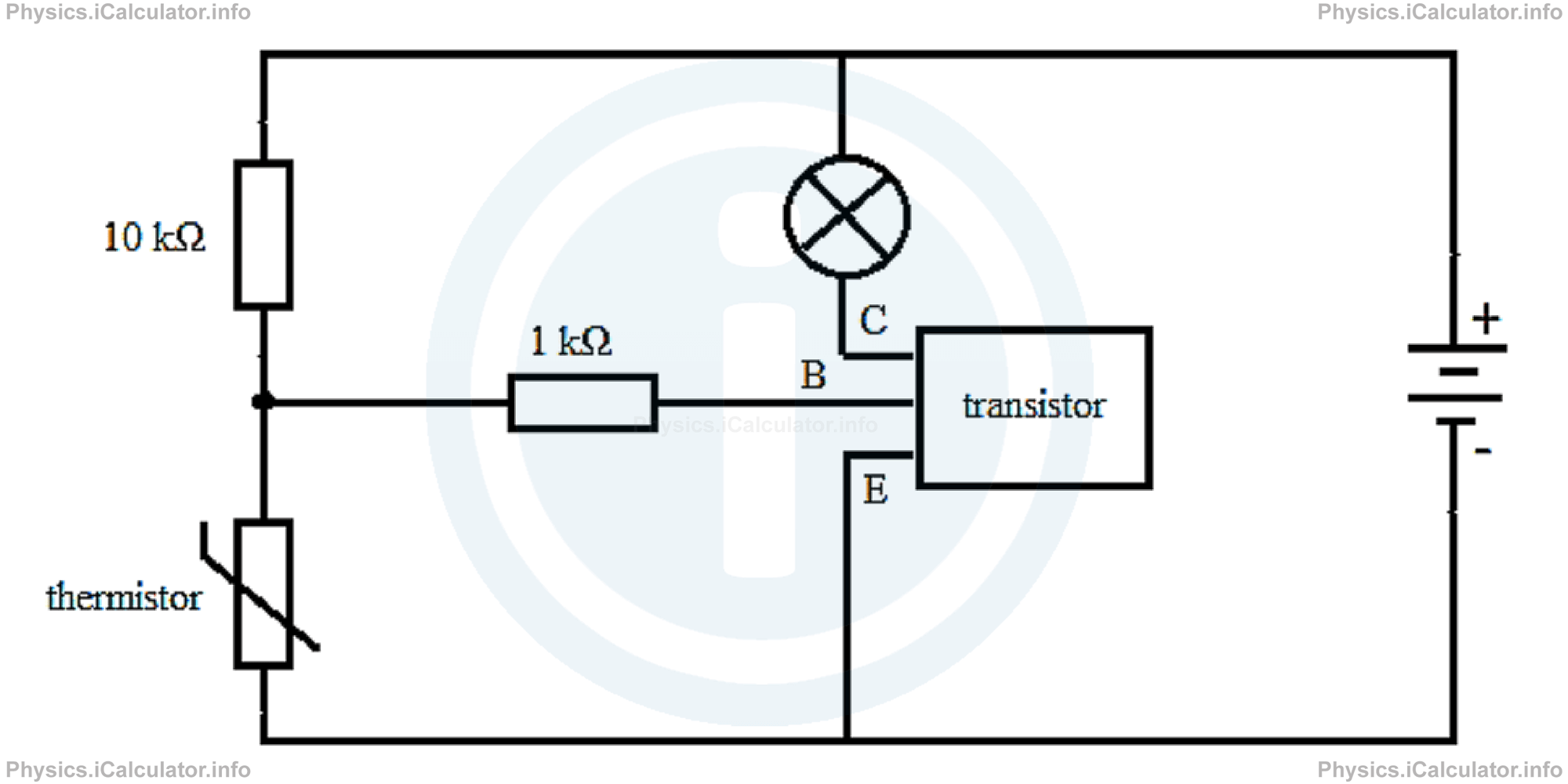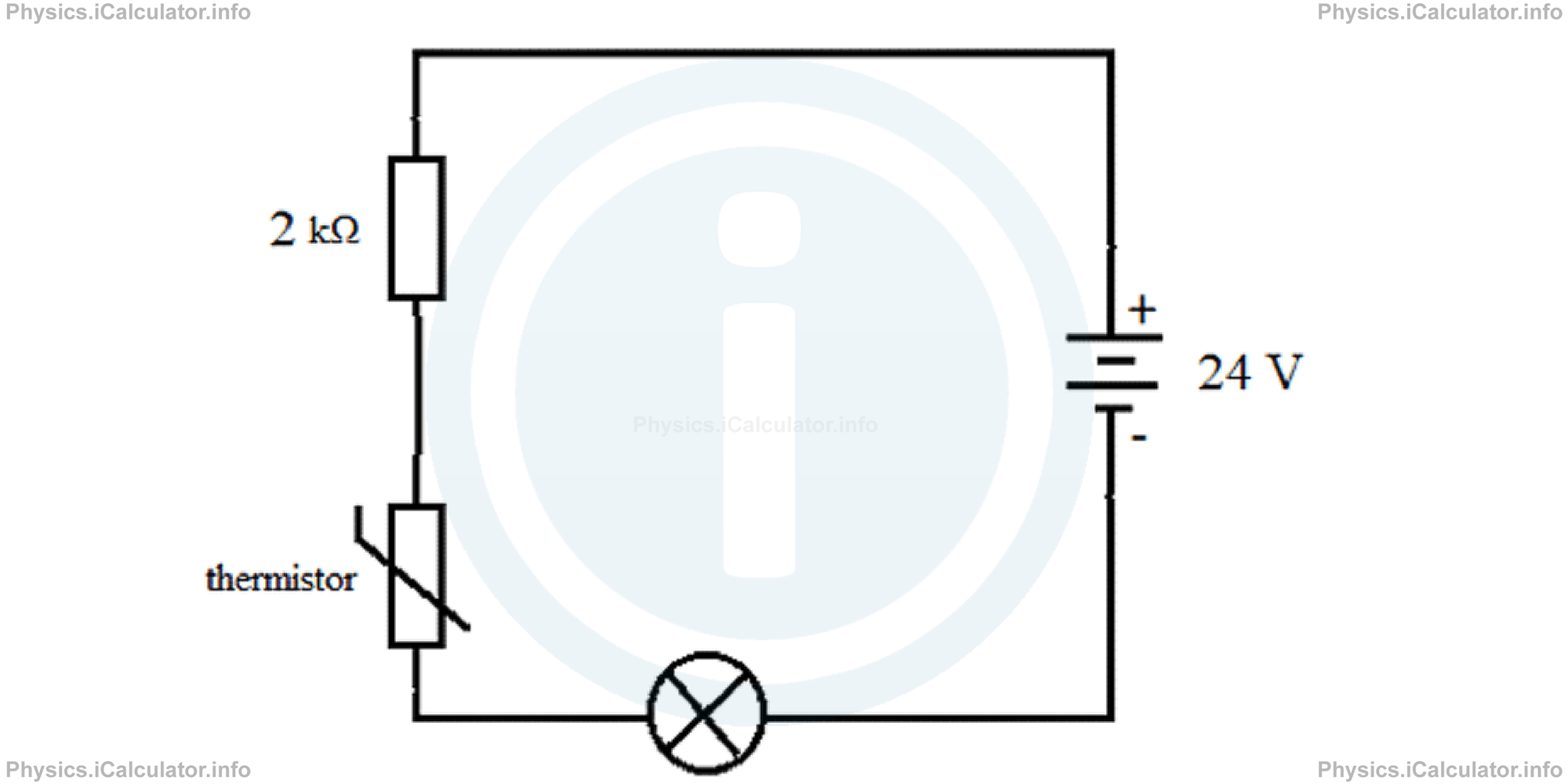Menu
Physics Lesson 17.2.5 - Electronic Switching
Please provide a rating, it takes seconds and helps us to keep this resource free for all to use
Welcome to our Physics lesson on Electronic Switching, this is the fifth lesson of our suite of physics lessons covering the topic of Electronic Components and Switching, you can find links to the other lessons within this tutorial and access additional physics learning resources below this lesson.
Electronic Switching
The traditional method of switching on a lamp consists on closing two contacts by pressing a switch. We have dealt with this method when discussing electric circuits in previous sections.
Another way of switching a small lamp or a LED is by using a transistor. In normal conditions, a transistor blocks the current. It acts like an open traditional switch. If a small voltage is applied across the two terminals 1 and 3 of the transistor, it starts conducting electricity and the lamp starts glowing. (The terminal 1 of collector is otherwise known as "collector", the terminal 2 as "base" and terminal 3 as "emitter". Therefore, sometimes you will see them labelled as C, B and E instead of 1, 2 and 3).
The conducting process discussed above can be achieved through a potential divider as explained earlier. Look at the figure below.

a. Types of electronic switching - Light sensitive switch
This is a kind of switch that is controlled through the light intensity. A light sensitive resistor (LDR) is connected in the section of circuit's potential divider. The resistance of this LDR decreases when light falls on it. When the circuit containing the LDR is placed into a dark environment, the lamp starts glowing because the resistance in the potential divider section is high and most of current flows through the rest of circuit where the lamp is connected. This is because the lamp turns on automatically at night.
Look at the figure below.

b. Types of electronic switching - Temperature sensitive switch
Now, let's consider a circuit containing a thermistor, which - as explained earlier - is a special type of resistor sensitive to temperature, i.e. a resistor whose resistance falls when the temperature rises. For example, a thermistor can be used to turn on a lamp when the temperature in the environment rises above a certain level. Again, we can use a potential divider to materialize this idea. Look at the figure below.

The principle of operation is the same as in the previous circuit containing the light sensitive resistor LDR; we have just replaced the LDR with a thermistor, which is affected by temperature, and not by the light intensity.
Example 2
A thermistor is connected in series to a 2 kΩ resistor. The two resistors are connected to a 24 V battery. The lamp turns on when the current in the circuit is at least 10 mA (0.01 A). The initial resistance of thermistor at the given temperature is 1.2 kΩ and it decreases by 50 Ω for every 10 C raise in temperature.

Solution 2
To have a 1mA current flowing through the circuit (necessary to turn the lamp on), the equivalent resistance must be
= 24 V/0.1 A
= 2400 Ω
The actual resistance however is
= 2 kΩ + 1.2 kΩ
= 3.2 kΩ
= 3200 Ω
Therefore, the resistance in the circuit must decrease by
= 800 Ω
to make the lamp glow as the resistance is higher than needed.
Since the resistance of thermistor falls by 50 Ω for every degree of temperature raise, we obtain for the raise in temperature needed to turn on the lamp:
Thus, the temperature must increase by 160 C to make the lamp glow.
You have reached the end of Physics lesson 17.2.5 Electronic Switching. There are 5 lessons in this physics tutorial covering Electronic Components and Switching, you can access all the lessons from this tutorial below.
More Electronic Components and Switching Lessons and Learning Resources
Whats next?
Enjoy the "Electronic Switching" physics lesson? People who liked the "Electronic Components and Switching lesson found the following resources useful:
- Switching Feedback. Helps other - Leave a rating for this switching (see below)
- Electronics Physics tutorial: Electronic Components and Switching. Read the Electronic Components and Switching physics tutorial and build your physics knowledge of Electronics
- Electronics Revision Notes: Electronic Components and Switching. Print the notes so you can revise the key points covered in the physics tutorial for Electronic Components and Switching
- Electronics Practice Questions: Electronic Components and Switching. Test and improve your knowledge of Electronic Components and Switching with example questins and answers
- Check your calculations for Electronics questions with our excellent Electronics calculators which contain full equations and calculations clearly displayed line by line. See the Electronics Calculators by iCalculator™ below.
- Continuing learning electronics - read our next physics tutorial: Electronic Essentials: Analogue and Digital Signals, Binary Operations and Logic Gates
Help others Learning Physics just like you
Please provide a rating, it takes seconds and helps us to keep this resource free for all to use
We hope you found this Physics lesson "Electronic Components and Switching" useful. If you did it would be great if you could spare the time to rate this physics lesson (simply click on the number of stars that match your assessment of this physics learning aide) and/or share on social media, this helps us identify popular tutorials and calculators and expand our free learning resources to support our users around the world have free access to expand their knowledge of physics and other disciplines.